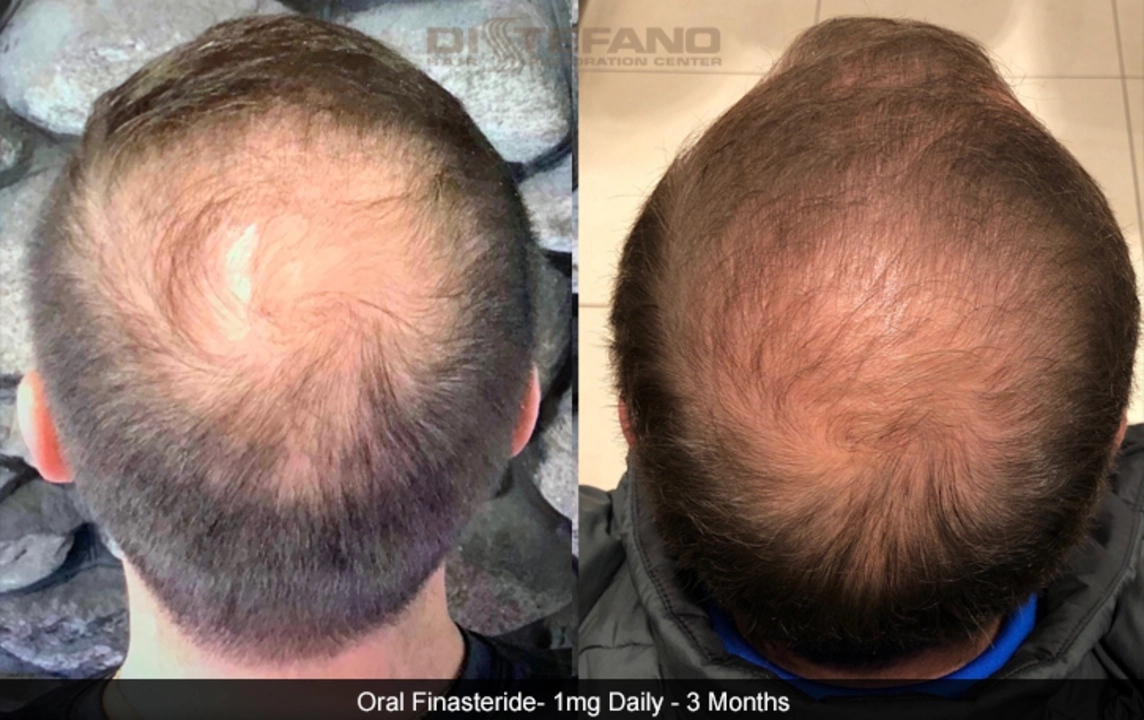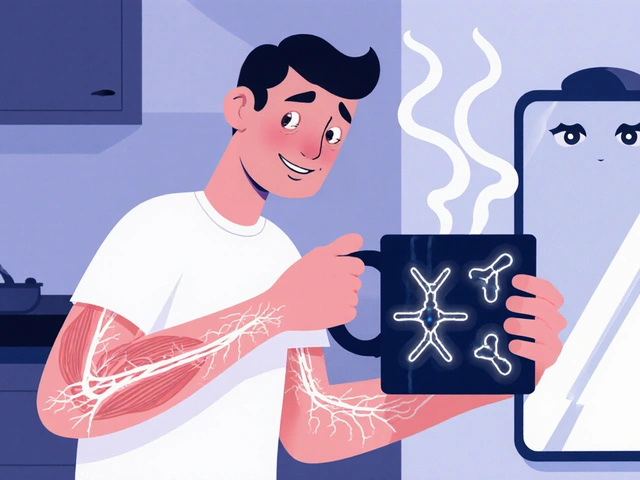Finasteride: What It Does and What to Expect
A tiny pill can slow or even reverse male pattern hair loss — but it comes with trade-offs. Finasteride is one of the most researched drugs for male hair loss and for enlarged prostate. If you’re thinking about it, you need straight answers: how it works, how long before you see results, what side effects to watch for, and what else you can try.
How finasteride works and what to expect
Finasteride blocks an enzyme called 5-alpha-reductase. That enzyme turns testosterone into DHT, the hormone that shrinks hair follicles in men with male pattern baldness. Lower DHT usually means less hair thinning and more chance to regrow hair where follicles are still alive.
Typical dosing for hair is 1 mg once daily. For prostate issues doctors often use 5 mg. Most people need 3–6 months before they notice thicker hair and up to 12 months for clear improvement. Stopping the pill usually means hair returns to the pre-treatment path within a year.
Side effects, safety checks, and practical tips
The most common downsides are sexual: lowered libido, weaker erections, or changes to ejaculation. These effects are uncommon but real, and they often improve after stopping the drug. A small number of men report mood changes or persistent sexual problems — talk to your doctor if that happens.
Two simple safety notes: finasteride lowers PSA values (used in prostate screening) by about half, so tell your clinician if you take it before a PSA test. Also, women who are pregnant or might be pregnant should avoid handling broken tablets because of risk to a male fetus.
Practical tips: track your baseline sexual and mental health so you can spot changes, give the drug at least 6 months before judging effectiveness, and don’t stop abruptly if you’re seeing gains without checking a clinician first.
Not seeing results or worried about side effects? There are other routes. Topical minoxidil can be added for many people. Dutasteride is sometimes used off-label and may be stronger but with higher side-effect risk. Non-medical options include PRP (platelet-rich plasma), low-level laser therapy, or hair transplant surgery. Topical finasteride and combination treatments are also options your dermatologist might discuss.
Want deeper reading? We’ve rounded up practical guides and alternatives on this site — from Propecia alternatives and dermatologist-approved hair-loss treatments to patient-focused comparisons of options. Check those posts to compare risks, costs, and what to expect in real life.
Bottom line: finasteride works for many men and can be a solid choice when you understand the timeline and possible side effects. Talk with your doctor, track how you feel, and use other treatments if you need extra help.
In my latest blog post, I discussed the pros and cons of using Finasteride for hair loss treatment. On the bright side, Finasteride is effective in slowing down hair loss and promoting hair regrowth for many people. However, it might not work for everyone, and some users may experience side effects like decreased libido and erectile dysfunction. It's essential to weigh the potential benefits and drawbacks of Finasteride before deciding if it's the right hair loss treatment for you. Stay tuned for more updates on hair loss treatments and solutions!
View Details

